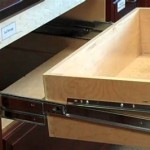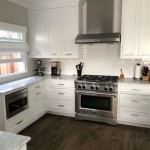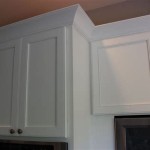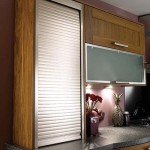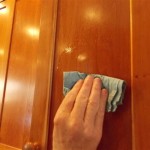How To Adjust Self Closing Kitchen Doors
Self-closing kitchen doors are a crucial aspect of maintaining a functional and organized kitchen. They provide convenience, prevent odors from spreading throughout the home, and enhance the overall aesthetic appeal of your kitchen space. However, over time, these doors may lose their self-closing mechanism due to various factors such as wear and tear, misalignment, or improper installation. Fortunately, adjusting self-closing kitchen doors is a relatively simple task that can be accomplished with a few basic tools and some know-how.
In this comprehensive guide, we will delve into the essential aspects of adjusting self-closing kitchen doors. We will cover the necessary tools, common problems that can affect the self-closing mechanism, and step-by-step instructions for making the necessary adjustments. By following these instructions carefully, you can restore the functionality of your self-closing kitchen doors and ensure they continue to provide convenience and aesthetic appeal for years to come.
Essential Tools for Adjusting Self Closing Kitchen Doors
- Screwdriver (Phillips or flathead, depending on the screws used)
- Allen wrench (if the hinges have Allen screws)
- Level
- Measuring tape
- Pencil or pen
Troubleshooting Common Problems
Before attempting to adjust your self-closing kitchen doors, it is essential to identify the underlying problem. Some of the most common issues that can affect the self-closing mechanism include:
- Misaligned hinges
- Loose or worn screws
- Damaged or faulty spring
- Clogged or obstructed hinges
- Overloaded door
Step-by-Step Instructions
Once you have identified the problem, you can proceed with the following step-by-step instructions to adjust your self-closing kitchen doors:
- Check the hinges: Inspect the hinges of the door to ensure they are properly aligned and not loose. Tighten any loose screws using the appropriate screwdriver or Allen wrench.
- Adjust the tension: If the door is closing too quickly or too slowly, you can adjust the tension of the spring by turning the adjustment screw located on the hinge. Turn the screw clockwise to increase tension and counterclockwise to decrease tension.
- Level the door: Use a level to ensure the door is hanging evenly and not sagging. If the door is sagging, it may need to be shimmed up at the bottom hinge.
- Lubricate the hinges: Apply a small amount of lubricating oil or grease to the hinges to reduce friction and ensure smooth operation.
- Test the door: Once you have made the necessary adjustments, test the door to ensure it is closing properly and at the desired speed.

Soft Close Hinge Adjustment Overclockers Forums

How To Adjust And Fix Hinges Step By Adjusting European

How To Adjust Cabinet Doors

How To Adjust Your Kitchen Cupboard Doors Made Easy

How To Adjust Cabinet Hinges Bob Vila

How To Adjust Kitchen Cabinet Doors Checkatrade

Wood Mode Cabinet Hinge And Adjustment Better Kitchens

How To Adjust Your Cabinet Door Hinges Properly

How To Add Soft Close Any Cabinet Porch Daydreamer

Replacing Cabinet Hinges With Overlay Self Closing The Palette Muse
Related Posts



